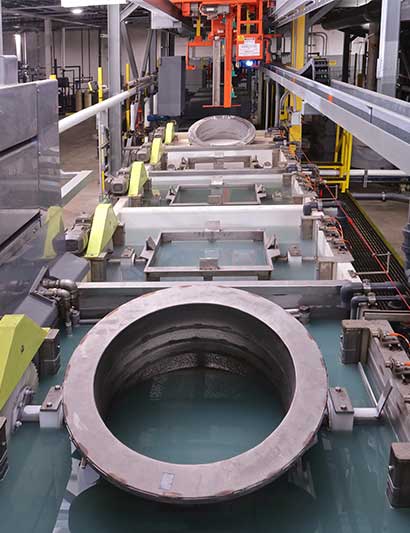Barrel Zinc Electroplating
What We Do
Barrel Zinc Electroplating
Electroplating uses electricity to move metal ions from an anode, through an electrolyte and deposit on the work that is negatively charged. Traditionally the part to be plated is connected to the negative end of the power supply. The source of metal plating is connected to the positive. Both are suspended in a conductive metal bearing liquid (electrolyte) and the flow of electricity deposits plating on the part.
When parts are too small to make a fixed direct connection worthwhile, barrel plating can be an option. A nonconductive container that has a flexible electrical connection inside is used to provide the physical contact between the parts and the power source. This container is known as a plating barrel.
Because electricity takes the shortest path, parts need to move from the outside to the inside of the group to distribute the plating. This movement is achieved by rotating the barrel during processing much like your home clothes dryer. Tumbling for a couple of hours will not damage the ideal candidate for barrel plating.
Zinc is a sacrificial coating that corrodes in preference to the part it is applied to. The protection is there, even if the plating is scratched or damaged. The amount of protection is directly related to the thickness of the zinc plating. Conversion coatings are frequently applied to zinc plating to enhance the corrosion resistance.

The original formulations used hexavalent chromium to provide a passive corrosion resistant layer over zinc plating. Newer formulations use trivalent chromium due to environmental concerns. Morgan Ohare offers:
- High Corrosion Trivalent Clear Passivate
- Trivalent Black Passivate
- Trivalent Yellow Passivate
We also have Hexavalent Yellow, Black, and Olive Drab Chromatic available.

